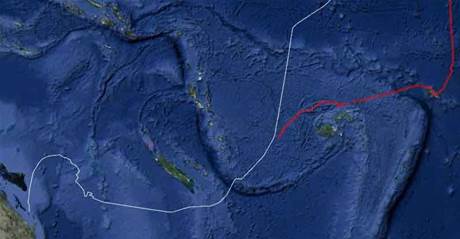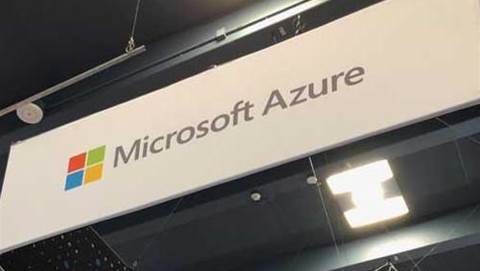The first trans-Pacific unmanned robot, the Papa Mau Wave Glider, has arrived in Brisbane after completing a 16,668 kilometre journey from California.

A solar-powered craft, the Papa Mau and four other Wave Gliders are self-propelled and collect a variety of data on sea salinity and temperature, wave heights and frequency, weather, fluoresence and dissolved oxygen.
Papa Mau also observed phytoplankton blooms around the equator in the Pacific, measuring increased concentrations of chlorophyll-A, confirming an increase in such events since the late 1960s caused by climate change.

Liquid Robotics chief scientist Luke Beatman told iTnews that approximately five million data points have been gathered by Papa Mau.
Different sets of data are collected from the Wave Gliders, Beatman said.
"We have the the environmental data that measures what's going around the Wave Glider, and the scientific data," Beatman said.
The second US-Australia Wave Glider, Benjamin, is continuing to transmit data.
The Wave Gliders communicate with the Internet using the Iridium satellite network, which allows for 2400 bits per second data speeds.
This allows the Wave Gliders to provide real-time data to researchers, a feature that Beatman said is unique and really surprised him when he started work at Liquid Robotics.
However, Beatman said the Wave Gliders also utilise Iridium's RUDICS (Router-Based Unrestricted Digital Internetworking Connectivity Solutions) that allows customers to send and receive data traffic over the Iridium network using an optimised circuit switched data channel.
Data gleaned by the Wave Riders is presented through a web interface, in comma separated values format for analysis by researchers.
Beatman envisaged several uses for teams of Wave Riders, including early detection of cataclysmic events such as tsunamis through pressure and wave height sensors.
Eventually, Liquid Robotics hopes to have hundreds of next generation Wave Gliders with improved solar panels for more power traversing the oceans, and believes the solution is scalable.
Nevertheless, Beatman admits that using the Iridium service which has standard charges of US$1.20 ($1.15) per 1000 bytes is the big budget item in the Liquid Robotics PacX project.
Among the management team of Liquid Robotics is James Gosling, the Canadian computer scientist who developed the Java programming language. The company is supported by BP, Google Earth, and Virgin Oceanic.



.png&h=140&w=231&c=1&s=0)
_(22).jpg&h=140&w=231&c=1&s=0)
_(20).jpg&h=140&w=231&c=1&s=0)



_(26).jpg&w=100&c=1&s=0)

 iTnews Executive Retreat - Security Leaders Edition
iTnews Executive Retreat - Security Leaders Edition











_(1).jpg&h=140&w=231&c=1&s=0)



